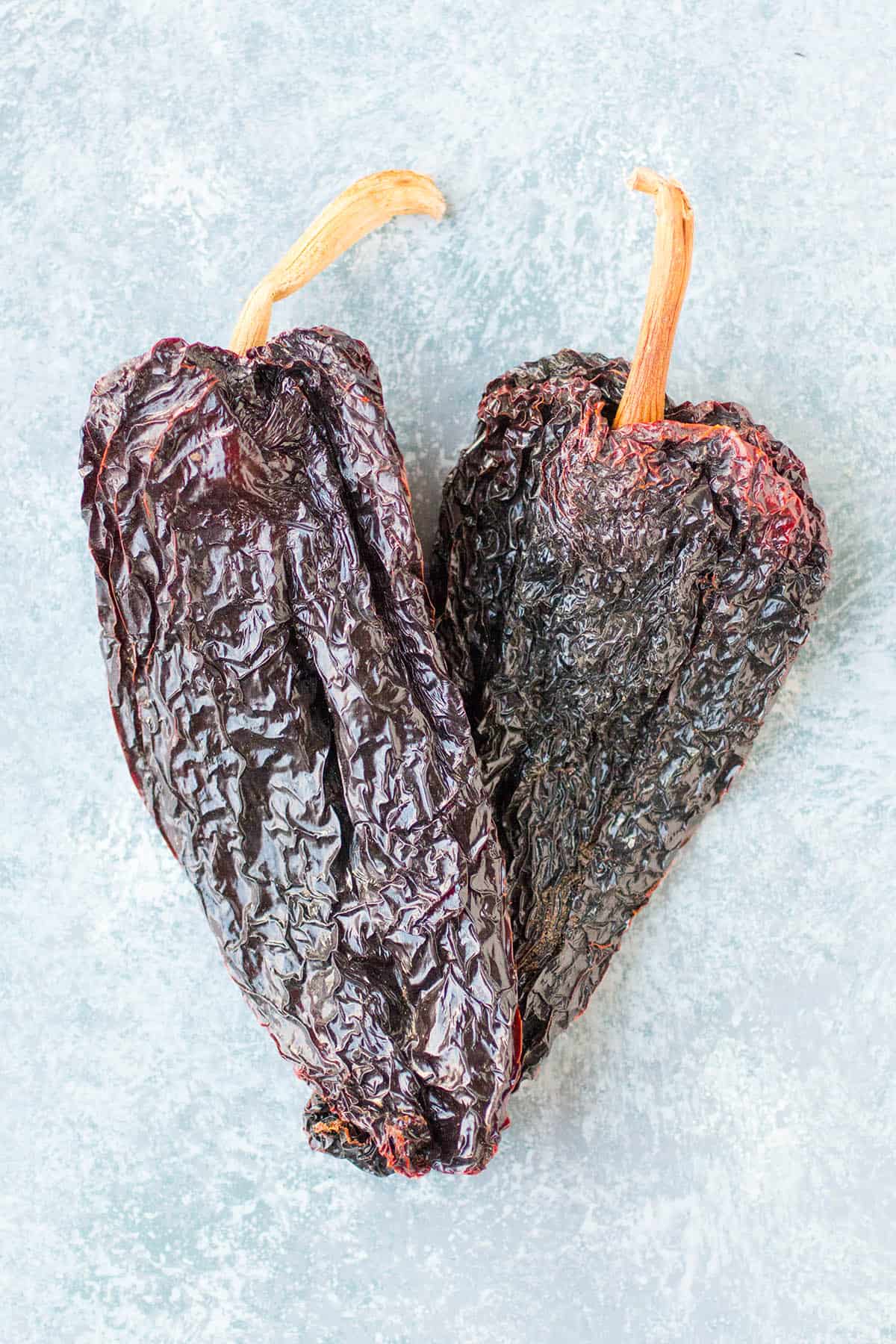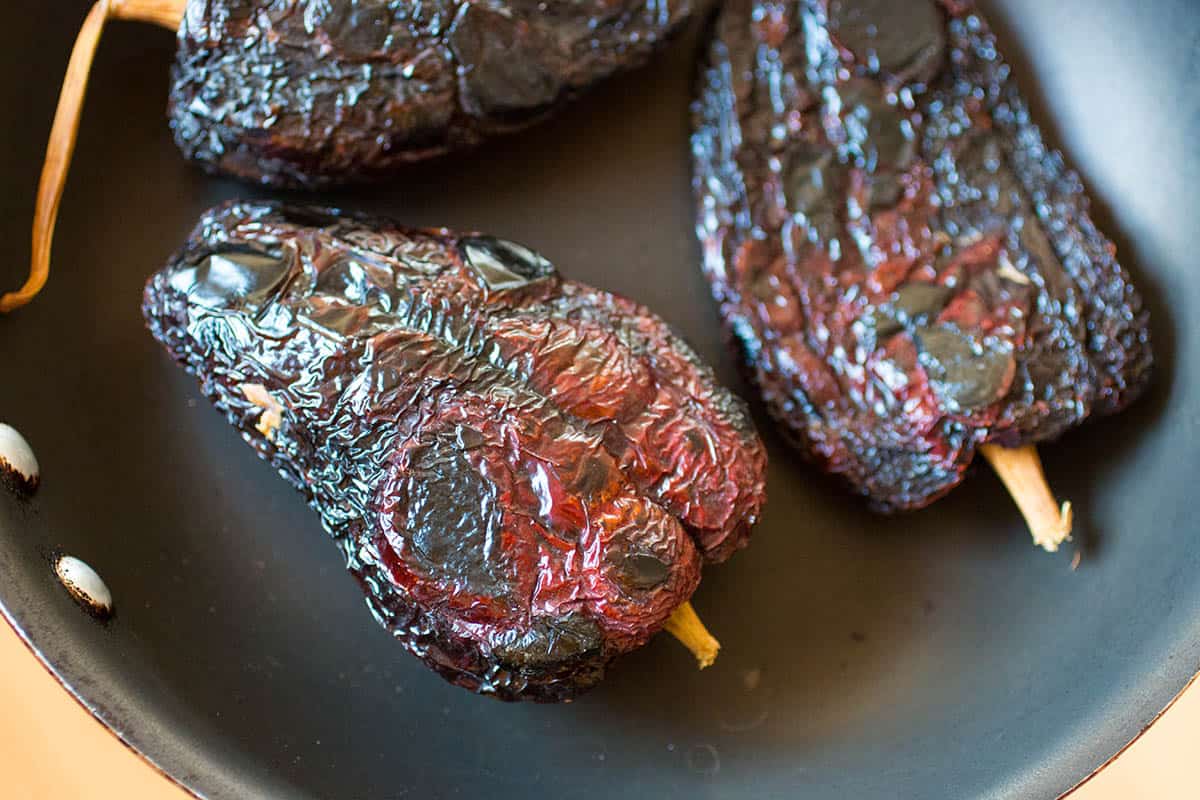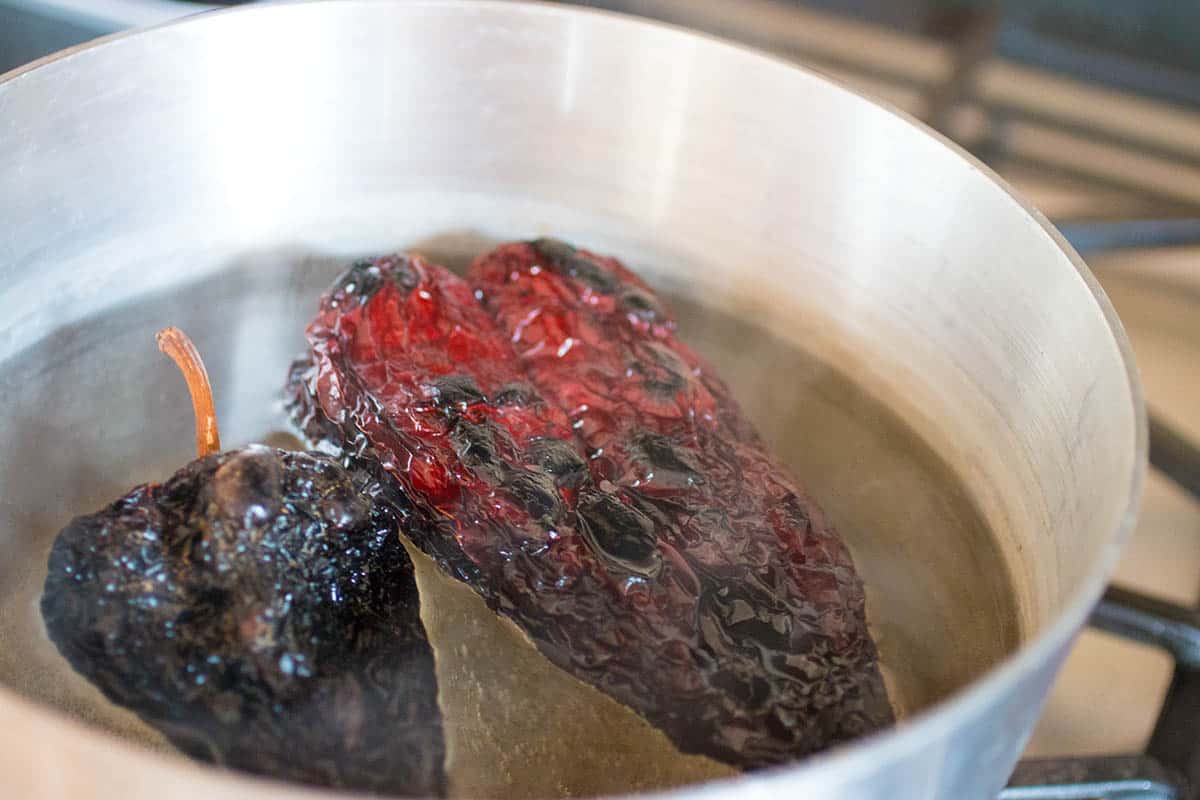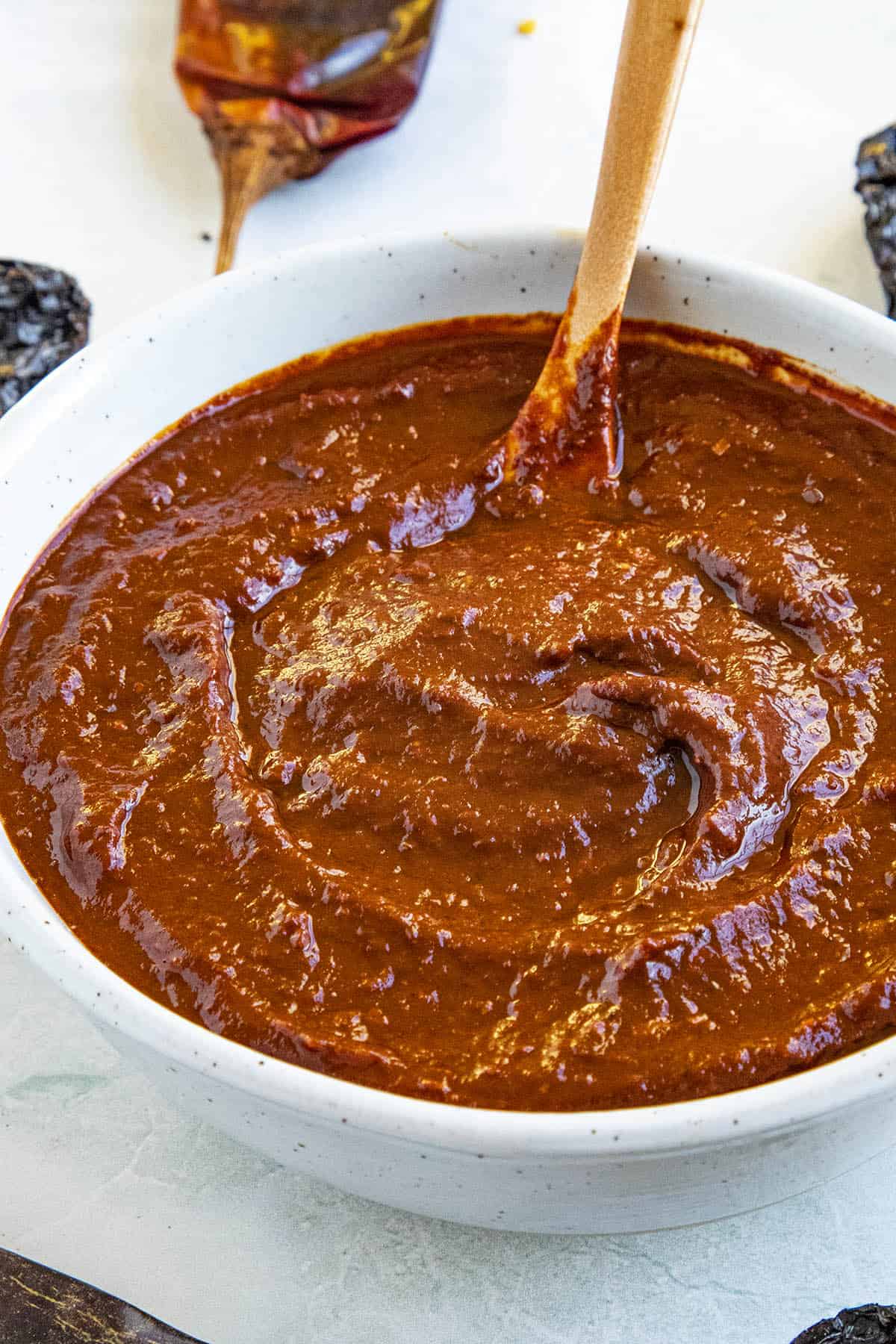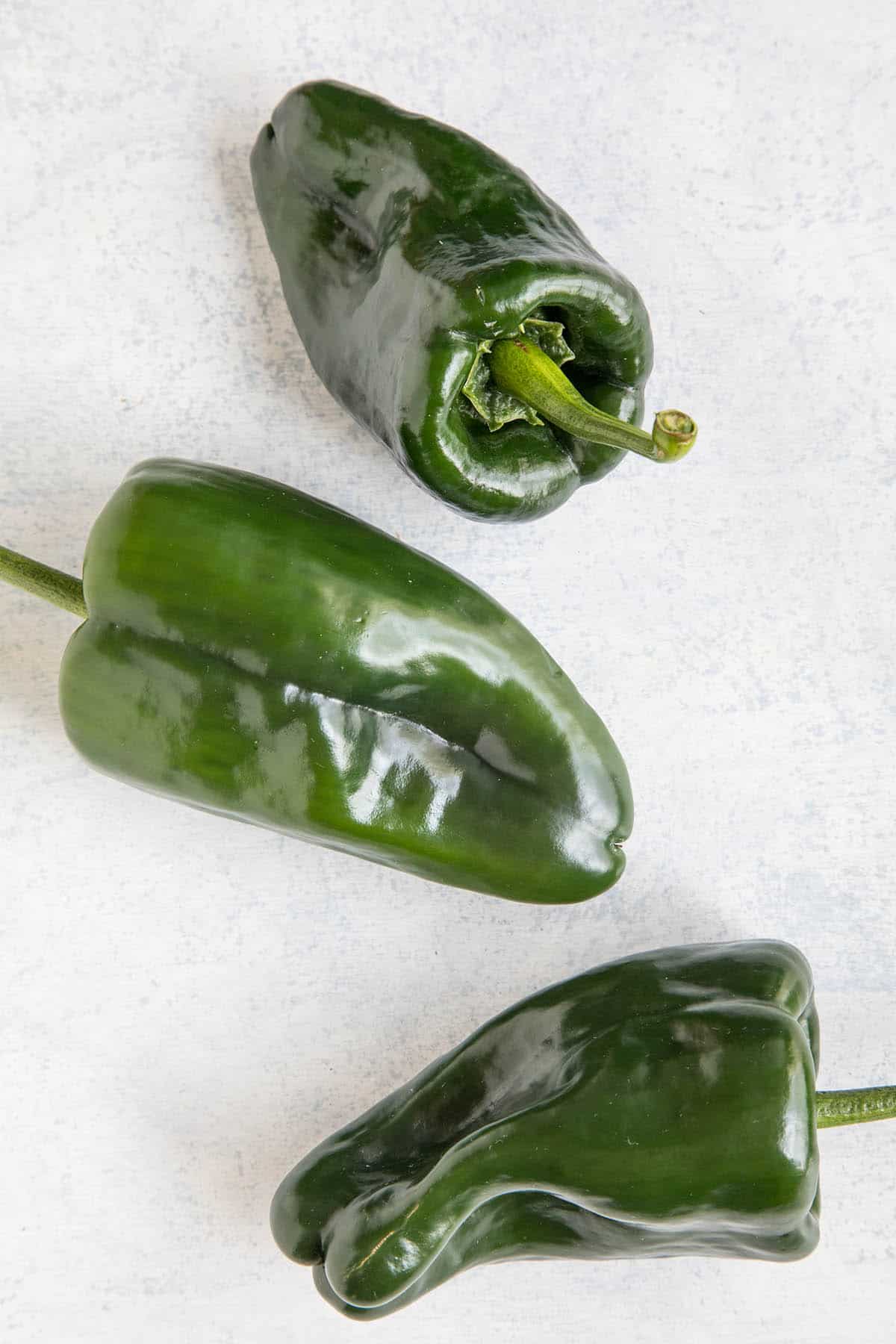NOTE: This post was updated on 2/25/20 to include new information. It was originally posted on 9/20/13. The Ancho Pepper is the dried version of the poblano pepper, and one of the most popular peppers in Mexican cuisine as well as Tex Mex cooking and of the southwest U.S. It is so important, in fact, that the peppers get their own name after being dried. Instead of simply calling them “dried poblanos”, they are called “ancho peppers”. They originate in the state of Puebla, Mexico. They are made when poblano pepper are allowed to stay on the vine to ripen until they turn red, then harvested and dried. This process effectively preserves the peppers, giving them much longer kitchen life. Mexican cooks and cooks around the world keep them stored in their cupboards where they can easily be retrieved for adding flavor to any number of recipes, from soup and stews to salsas and sauces. The peppers are known for their rich smoky quality, with sweet to moderate heat and a mild paprika flavor. Compare that to a bell pepper, which has no heat and measures at 0 SHU and a jalapeno pepper which averaged about 5,000 SHU, you will find that the ancho pepper is 2.5 to 5 times milder than a jalapeno. They are normally seeded and stemmed first. Once they are rehydrated, ancho peppers is commonly used for making thick sauces, such as mole sauce or adobo sauce or enchilada sauce. The Ancho is used to add flavor, heat, and color to the sauces, as well as the distinctive red color. Anchos, along with pasilla and guajillo peppers, are sometimes said to comprise the “holy trinity” of Mexican chile peppers, sometimes along with the dark mulato pepper, though that is a very loose term. Dried ancho chile peppers can also be ground into chili powders which are used for general seasonings, and important for making sauces and big pots of flavorful chili. Poblano peppers offer an earthy flavor, though they are quite vegetal when fresh, perfect for stuffing for recipes like chile rellenos, or for making classic dishes like rajas poblanas. Anchos, being dried chiles, are even earthier and quite complex in flavor. They aren’t meant for stuffing, but rather for either grind into chili powders or rehydrating for making sauces and more. Anchos have an earthier, darker flavor, where guajillos are a bit fruity with notes of green tea. They actually work wonderfully when used together. I hope you enjoy them!
